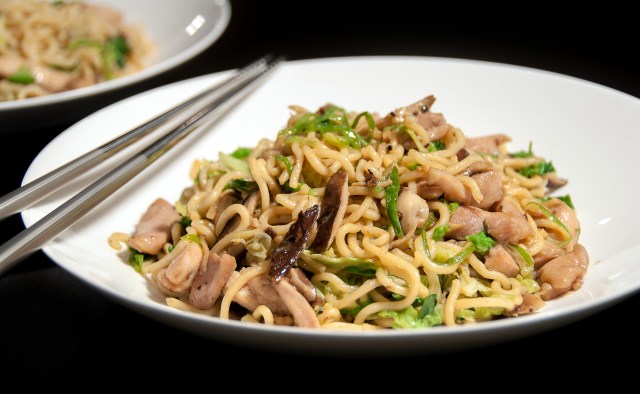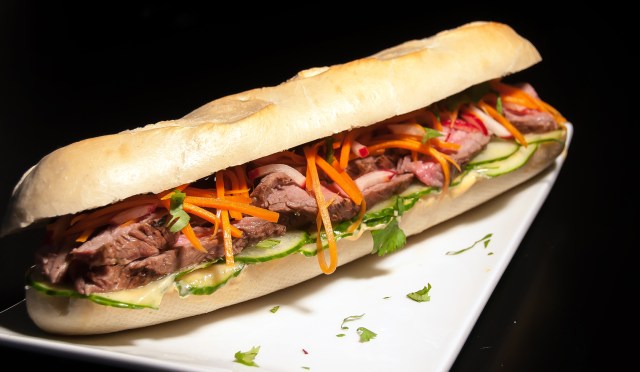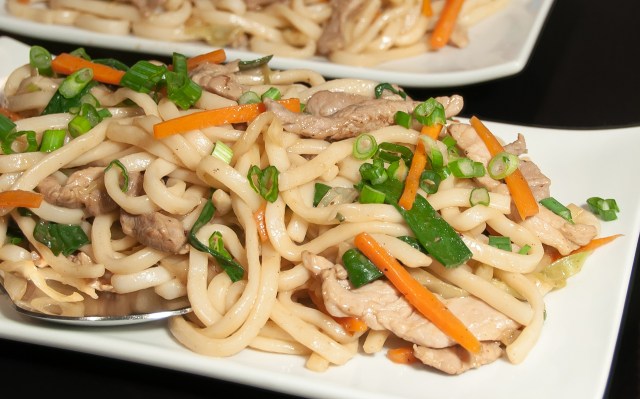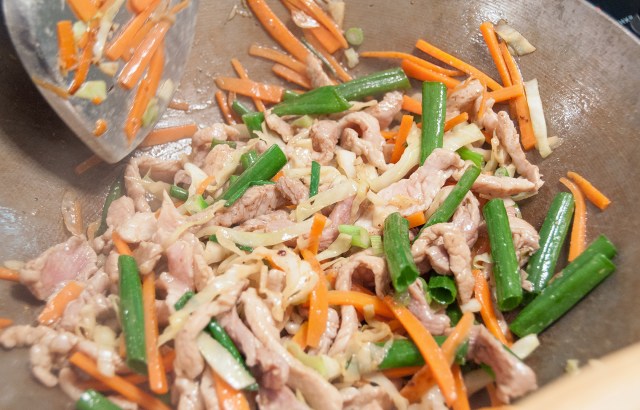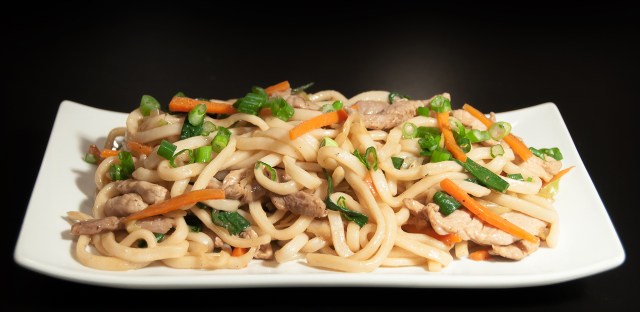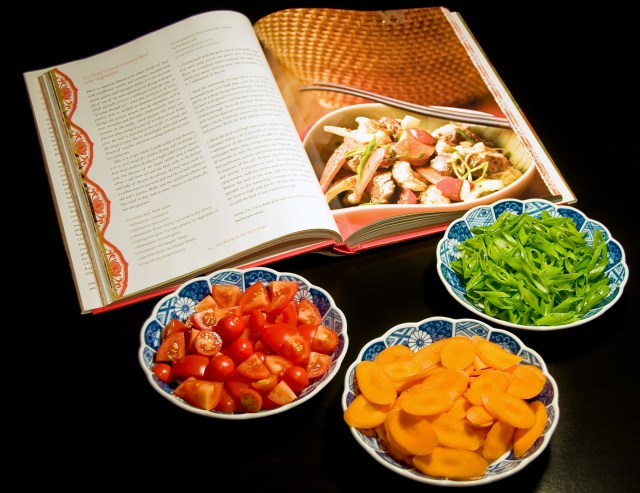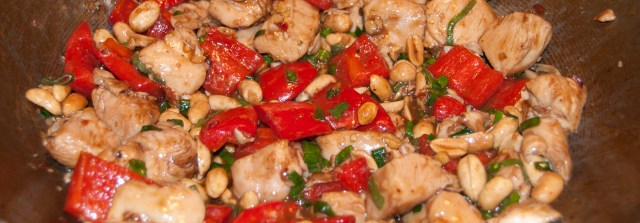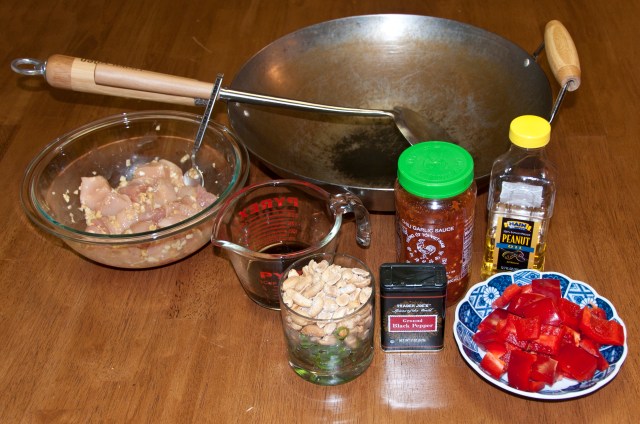This past weekend was our first free weekend since before our wedding! No DockDogs events, no traveling, no commitments… just time to ourselves! We celebrated by sleeping in both days, going out to lunch together (because we slept through breakfast) and watching hours of the British Open and Tour de France. I also did a lot of running on our brand new treadmill and Matt started a construction project that involved cutting open our bedroom wall in multiple spots… more on those events in a future post!
For dinner on Saturday we made a new recipe from our trusty cookbook, Stir Frying to the Sky’s Edge. I know I’ve said this before but this cookbook is AWESOME! In addition to savory recipes like Kung Pao Chicken and Hot Pepper Beef, this book is also full of helpful cooking techniques, information about ingredients and a whole tutorial on how to select and care for your wok. We have always been amazed by how great the recipes from this book turn out and Saturday’s dinner of Chicken Lo Mein was no exception. Without further ado, here’s the recipe!
Chicken Lo Mein with Ginger Mushrooms (from Stir Frying to the Sky’s Edge by Grace Young)
You will need…
12 oz. fresh thick Egg Noodles*
2 teaspoons Sesame Oil
12 oz. boneless, skinless Chicken Thighs, cut into 1/4″ thick bite-sized slices
1 tablespoon Ginger, finely shredded (cut into tiny matchstick-like pieces)
1 teaspoon plus 1 tablespoon Rice Wine or Dry Sherry, divided
1 teaspoon Cornstarch
1 teaspoon plus 1 tablespoon Soy Sauce, divided
1 teaspoon Salt, divided
1/4 teaspoon Ground White Pepper
2 tablespoons Peanut Oil, divided
1/4 teaspoon Red Pepper Flakes
3 cups Napa Cabbage, thinly sliced
4 oz. Shiitake Mushrooms, stems removed and caps thinly sliced
1/2 cup Scallions, finely shredded (try using a Negi cutter to shred the scallion into even threads)
*We couldn’t find egg noodles so we used a package of Kame Stir-Fry Hokkien Noodles that we simply microwaved to heat up.
Directions:
Cook or heat up your noodles until al dente according to the package instructions. If using fresh noodles that you have to cook in boiling water, drain the cooked noodles and rinse several times with cold water. Place the cooked noodles in a bowl and stir in the sesame oil. Set aside.
Combine the chicken, ginger, 1 teaspoon rice wine, cornstarch, 1 teaspoon soy sauce, 1/4 teaspoon salt and the white pepper in a small bowl. In another small bowl combine the remaining 1 tablespoon rice wine and 1 tablespoon soy sauce.
Heat a wok over high heat. Pour in 1 tablespoon of the peanut oil and add the red pepper flakes. Stir fry for 10 seconds then push the flakes to the sides of the wok and add the chicken mixture. Spread the chicken evenly on the bottom of the wok and allow to cook, undisturbed, for 1 minute, then stir fry the chicken for another 30 seconds or until it starts to brown. Add in the cabbage and mushrooms and stir fry for 1 minute or until the cabbage wilts. Transfer the wok contents to a plate.
Pour the remaining tablespoon of peanut oil into the wok then add in the noodles and stir fry for 15 seconds. Stir in the rice wine/soy sauce mixture and add the scallions, chicken mixture, and remaining 3/4 teaspoon salt. Stir fry for 1 to 2 minutes or until the chicken is cooked through. Serve and enjoy!

